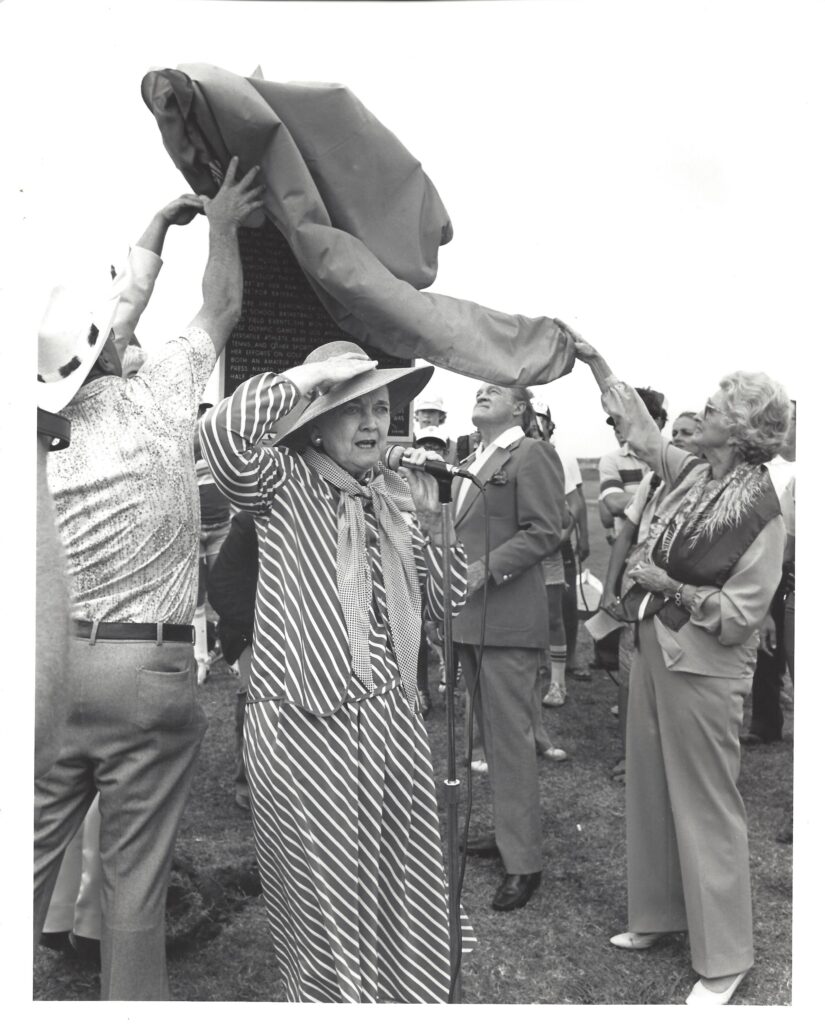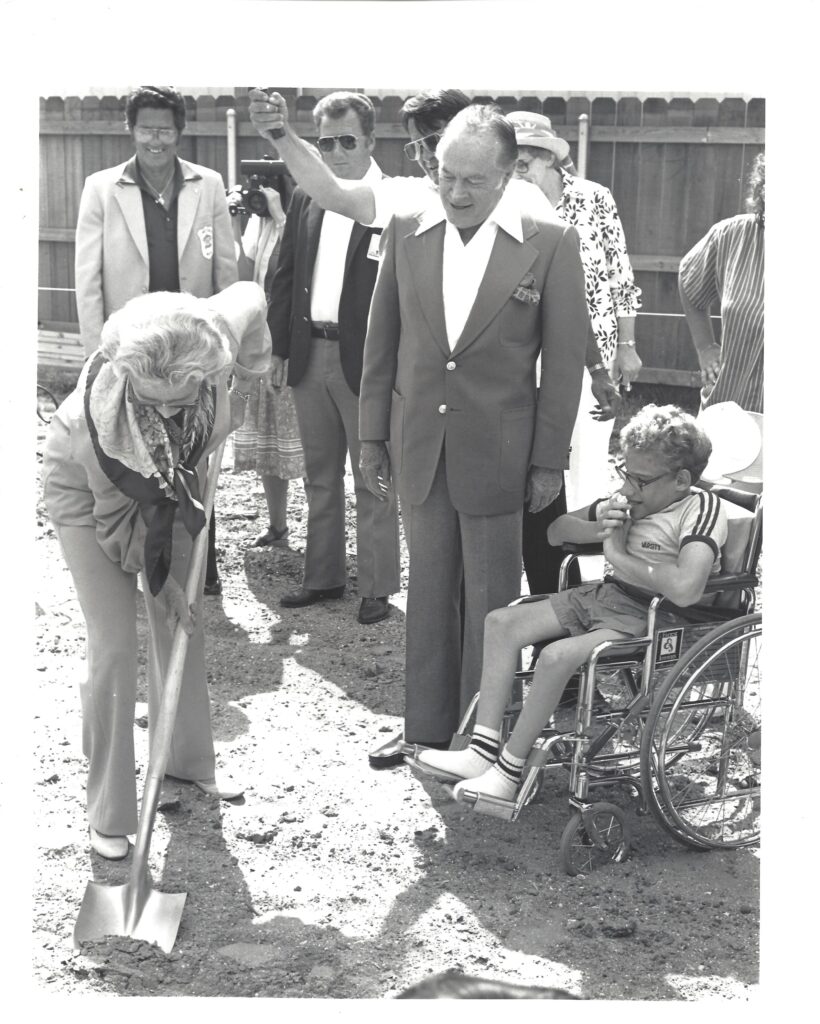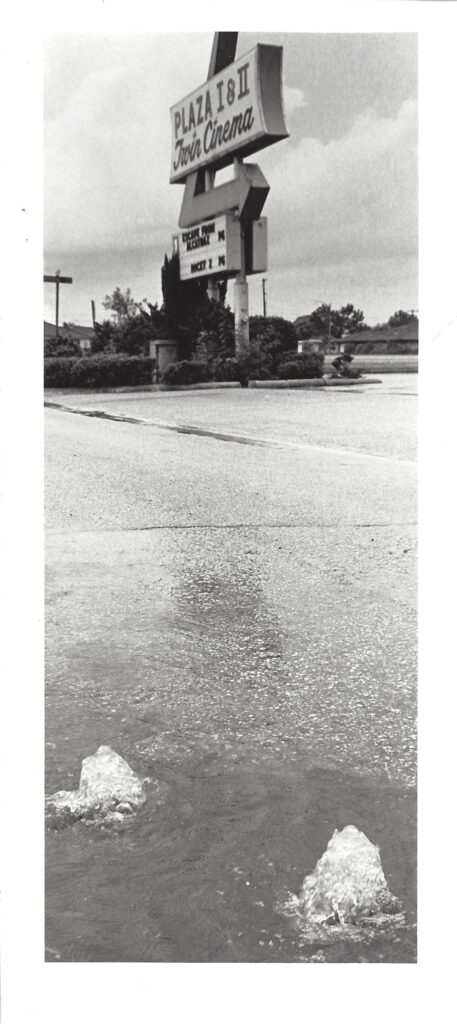
A few years back, I purchased some photos from an estate sale. They were taken by Don Larson, who worked at The Port Arthur News, in the early 1980s. I didn’t spend much on them, but to me, they are iconic. The first photo is from the Babe Zaharias Historical Marker dedication on 7th street in Port Arthur. (Yes, Babe was from Port Arthur, but Beaumont tries to claim her all for itself.) In my opinion, Babe was big enough for the universe to claim her.
In the photo, the lady trying to hold on to her hat is Sydalise Fredeman, who saved the Pompeiian Villa from Port Arthur’s gauntlet of destruction of its history. Back in the 1960s, both Port Arthur and Beaumont didn’t care about their history, so they decided to destroy many structures within their city limits. Still, Mrs. Fredeman took no crap in Port Arthur and saved this treasure along with the Port Arthur Historical Society. (At the time, she was the Port Arthur Historical Society)
Also in this photo are Bob Hope and Bum Phillips, and I’m almost sure that Wayne Newton is in there somewhere. The second photo is the groundbreaking of Bob Hope School/Hughen School. Of course, neither Bob nor Wayne are manning the shovel, but that’s alright when your philanthropy gives kids a much-needed boost.
Apropos of Hughen School, I remember Mr. Le (the last name might be misspelled because, at age 10, I wasn’t J. Edgar Hoover informed yet). He was my neighbor in the 1970s and ‘80s. He was a very nice man who always laughed and was just a great adult to us mongrels in the neighborhood. He rode his bike to work each morning; if I was on my bike, it would be a race. He had two sons who were good to us mongrels, but when mom found out her two kids were mongrels, usually each week, dad did the disciplining. I don’t know all their family history, but I know that Mr. Le was a captain in the South Vietnamese Army before relocating here. They were great people, and I am glad to have known them.
Another photo is of the Park Plaza Cinema sign. This is special to me because I believe I saw the first Star Wars movie there 12 times. (Of course, multiple viewings were had by not getting up and leaving after the movie ended.) Smokey and the Bandit was another one that I enjoyed while learning sign language from Sally Field in the movie. Jackie Gleason was the man.
The other day I watched again a movie called Joyeux Noel. It is loosely based on the Christmas truce during World War I. It had a great message: “Why the hell are we fighting out here in the trenches when we could be home with the wife and our newborn? Instead we are here, stuck in the mud with Felix the cat.” It’s a good movie and I’m sure that if you rent it or buy it on Amazon there are subtitles. But if you watch it on YouTube, someone from France has uploaded it and there are no subtitles. No problem, my Scottish is good (the movie says British, but this was a Scottish regiment, and the Scotts would tell you the same.) I can understand German passively because of an interest in German music and some French because I took a class in high school—but that was a long time ago, so my French sucks. There are many poignant moments throughout the movie, but I was really irritated when the French spoke. I can’t give a reason for it, but I got annoyed when the commander spoke.
This wasn’t a problem when I would listen to Johnny Janot’s Cajun Bandstand on Sunday mornings on KLVI in the 1980s. He was the best. That dog of his really got him into trouble. I don’t understand why Johnny named his dog Sex anyway. Please click on the link below, where Johnny tells the story himself.
And speaking of Johnny, before I get to my point, he had a song called the Woodpecker Song, and in my short-lived musical life, we did a cover of it, but metaled it up a bit. Cajun Metal, who thought.
The thing that really irritated me was not in the movie, but it’s connected to it. In a scene where all the soldiers begin to come out of the trenches and trade chocolate and alcohol, Felix the cat shows up. The German soldier acknowledges him as Felix, but the French soldiers insist that his name is Nestor. There is nothing more to this scene. But in real life, this story is based on a trial and verdict by a French commander/general. After the truce, someone in charge decided to put Felix on trial for treason. Not to get into the weeds per se, but cats were good pets in the trenches during the great war. Mud, toxic gases, and rats were a big part of soldiers’ suffering in those trenches.
Felix, the cat, was a cat. He cared nothing about Germany or France fighting a war. He ate well until this French commander learned that he was playing both sides. Felix was thus executed for treason. (This really happened! Link below.)
Well, that’s it for this week. If you see me around town, don’t speak to me in French because I may scratch you if you do, but you could try singing. French singers are great. I bid you Meow (that’s cat speak for “bonjour”). Au revoir.
Johnny Janot:
Felix the cat:



You must be logged in to post a comment.